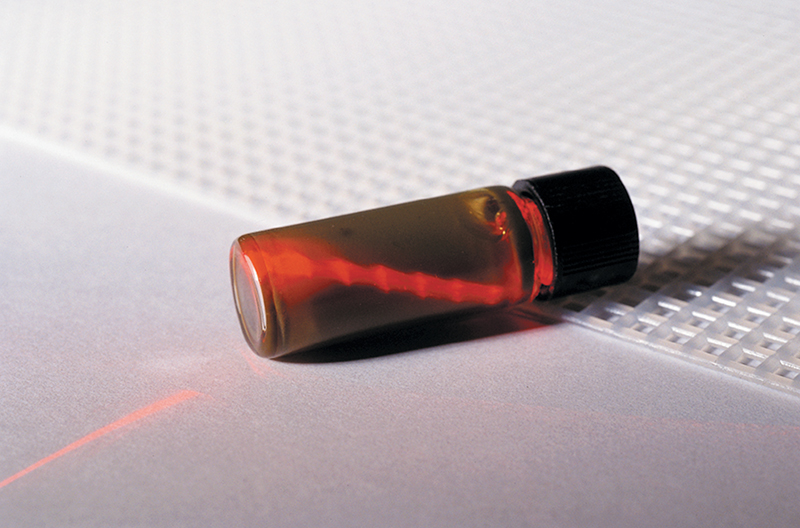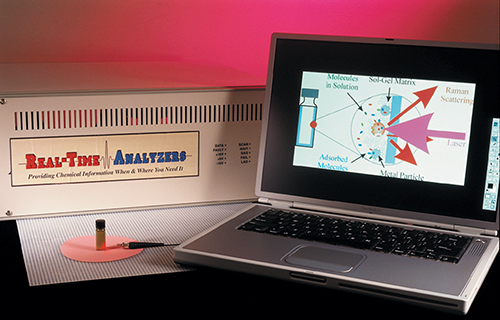
Versatile Vials
Small Business Technology Transfer (STTR) funding helps create thousands of fascinating beneficial products. Through an STTR contract from NASA's Johnson Space Center, Advanced Fuel Research, Inc. (AFR), of East Hartford, Connecticut, developed an innovative product that provides significant opportunities in a variety of fields.
AFR developed a new sol-gel material coating for sample vials to be used in surface-enhanced Raman (SER) spectroscopy. Raman spectra consist of a wavelength distribution of bands that correspond to molecular vibrations specific to the sample being analyzed. In practice, if a laser is focused on a sample, the scattered radiation, or Raman, is optically collected and directed into a spectrometer. The spectrometer then provides wavelength dispersion and a detector converts the collected photon energy into electrical signal intensity. Due to the low conversion of incident radiation to scattered radiation, Raman spectroscopy has traditionally been limited to applications that were difficult to perform through infrared spectroscopy. However, AFR removes some of these limitations with their new SER coated sample vials.
The sol-gel material was developed for NASA to provide trace chemical analysis capabilities, and consists of silver nanoparticles embedded in a porous sol-gel glass. The new material increases Raman scattering by one million times, and sometimes more. Each SER vial is coated with the SER active sol-gel material, enabling it to provide molecular structure information. This patented coating allows researchers to identify and quantify chemicals at parts-per-billion concentration levels.
To use the product, a solution containing the chemical to be tested is injected into the vial. The entire vial is then placed in a Raman spectrometer for analysis. The resulting measurement consists of the wavelength distribution of bands in a unique pattern, which relates specifically to the chemical being tested, enabling simple identification of chemicals, biochemicals, and pharmaceuticals.
NASA projects applications of the sol-gel coating technology for monitoring water quality aboard spacecraft and astronaut health through body fluid analysis. The technology provides such improved advantages over traditional analytical methods that it will be used in a variety of fields.
AFR has uncovered numerous commercial applications for the vials. In the fields of biomedical and forensic science, the coated vials are used to identify physiological chemicals present in blood and urine. The vials are used in the pharmaceutical industry in the area of drug development and discovery. In the drug enforcement field, using the vials helps with detection of trace amounts of drugs on surfaces. The SER vials will also help to identify contaminants in water sources, such as various inorganics and pesticides.
The new vials have advantages over other SER materials. Former products required that samples be pre-mixed or dissolved into specific solvents or reagents. The SER vials do not have these limitations, and measurements can be performed using any solvent. Furthermore, the signal appears in less than one second. The sol-gel material will stay active for at least one year and the vials are compatible with any Raman spectrometer. Most importantly, the SER activity can be duplicated from vial-to-vial, allowing for reproducible results.
AFR is proud to be the only provider of a commercial SER product. As a result of initial sales of the SER vials and the development of a process Raman analyzer, AFR formed a new spinoff company: Real-Time Analyzers. It is the mission of Real-Time Analyzers to provide its unique trace chemical analysis capabilities to various industries.

The analyzer takes samples using a laser, which is passed through the sol-gel-coated SER vial. The diagram displayed on the computer explains the sol-gel process.

A single vial with a laser passing through it during a sampling procedure.













